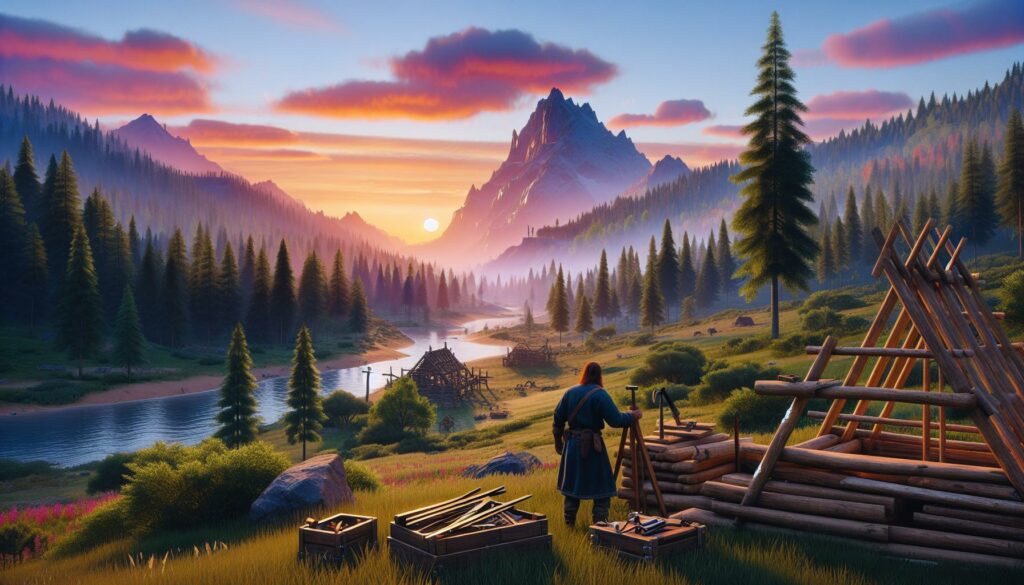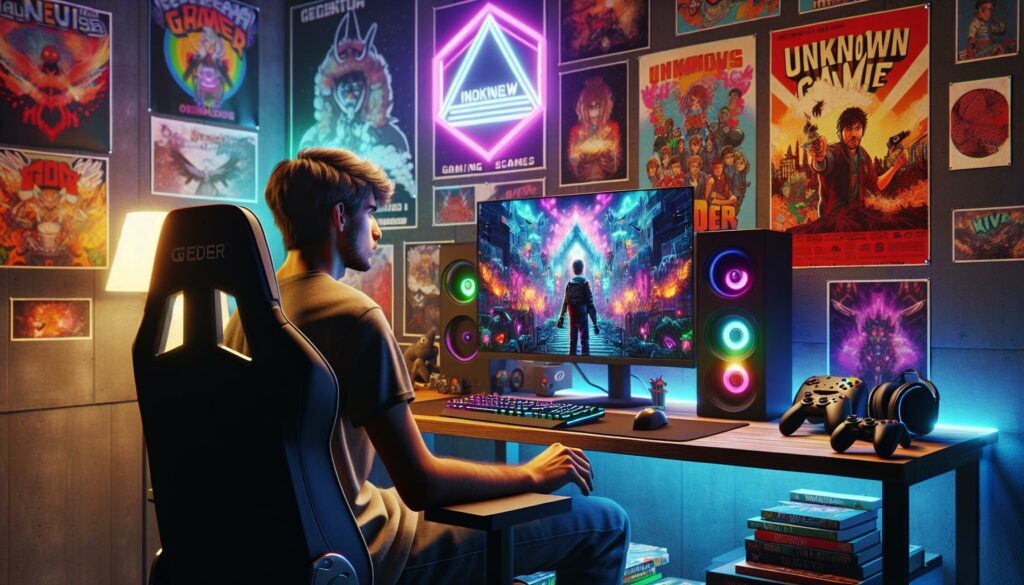As an avid gamer I’ve watched indie open world games evolve from simple passion projects into groundbreaking experiences that rival AAA titles. These creative gems offer unique perspectives and innovative gameplay mechanics that often push the boundaries of what’s possible in gaming.
I’ve discovered that indie developers are reimagining the open world genre with fresh approaches to exploration and storytelling. From pixel art masterpieces to stylized 3D adventures these games prove that you don’t need a massive budget to create an immersive world. Games like Valheim and Outer Wilds have shown that small teams can craft vast universes that capture players’ imaginations and keep them coming back for more.
Key Takeaways
- Indie open world games demonstrate that small development teams can create immersive experiences rivaling AAA titles through creative freedom and focused design
- Creative innovations like Outer Wilds’ time loop system and Valheim’s building mechanics showcase how indie developers take risks that larger studios often avoid
- Community-driven development through Discord updates, early access feedback, and modding support plays a crucial role in indie game success
- Resource-efficient techniques like procedural generation and stylized graphics allow indie developers to create vast worlds despite budget constraints
- The future of indie open world games looks promising with emerging technologies like cloud computing and AI-driven content generation enabling even more ambitious projects
Indie Open World Games
Creative Freedom Without Corporate Constraints
Indie developers operate with complete creative control, enabling unique gameplay mechanics like Outer Wilds’ time loop system or Valheim’s building mechanics. This freedom allows developers to take creative risks major studios often avoid due to financial pressures.
Focused Game Design
Indie open world games concentrate on specific gameplay elements rather than trying to include every feature. Stardew Valley focuses on farming mechanics while No Man’s Sky emphasizes exploration. This targeted approach creates deeper more meaningful experiences in each chosen aspect.
Innovative Progression Systems
Independent developers reimagine traditional progression mechanics. Games like Subnautica tie advancement to exploration survival instead of standard experience points. Core Loop Games’ Eternal Return blends MOBA elements with open-world survival creating distinct gameplay loops.
Community-Driven Development
Indie studios maintain direct communication with players through:
- Regular developer updates on Discord servers
- Integration of community feedback during early access
- Rapid implementation of player-suggested features
- Active modding support extending game longevity
Resource-Efficient World Building
Small development teams create engaging worlds through:
- Procedural generation in games like Minecraft
- Hand-crafted key locations with procedural elements
- Stylized graphics reducing development overhead
- Environmental storytelling through careful asset placement
Experimental Mechanics
Independent developers introduce unconventional features:
- Time manipulation in Outer Wilds
- Dynamic world evolution in Terraria
- Physics-based construction in Kerbal Space Program
- Unique movement systems in A Story About My Uncle
- Base games typically range from $15-30
- Free content updates extend gameplay value
- Optional DLC adds features without mandatory purchases
- Regular sales make games more accessible
Evolution of Open World Design in Indie Games
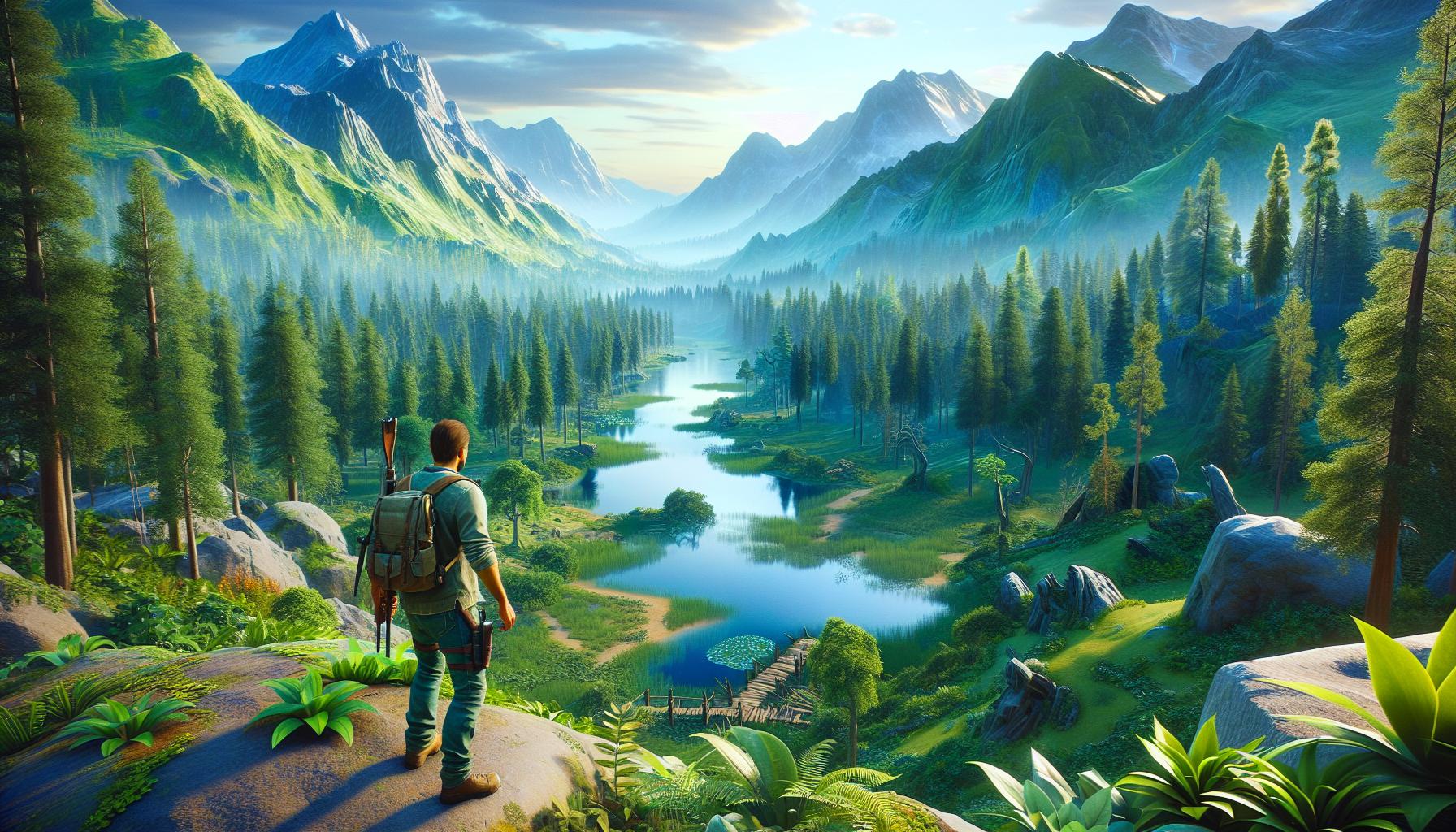
Indie developers revolutionized open-world game design through experimental mechanics and unconventional approaches. These innovations transformed player expectations and established new standards for environmental storytelling and world exploration.
Breaking Traditional Boundaries
Indie open-world games redefined conventional design principles by introducing dynamic systems that prioritize player agency. Outer Wilds eliminated traditional quest markers in favor of knowledge-based progression, while Valheim integrated survival mechanics with Norse mythology. Notable boundary-breaking elements include:
- Emergent storytelling through environmental clues rather than scripted narratives
- Dynamic world states that change based on player discoveries
- Non-linear progression systems without level-gating content
- Interconnected ecosystems that respond to player interactions
- Minimal UI elements that encourage natural exploration
- Contextual navigation tools that replace traditional mini-maps
- Environmental puzzles requiring observation and deduction
- Systemic weather patterns affecting travel and survival
- Resource-driven exploration paths that guide player movement
- Physics-based traversal mechanics integrated with world design
| Game Example | Innovation Type | Impact on Design |
|---|---|---|
| Outer Wilds | Knowledge-Based Progression | No Traditional Markers |
| Valheim | Systemic Building | Dynamic Base Construction |
| Subnautica | Vertical Exploration | Depth-Based Advancement |
| No Man’s Sky | Procedural Generation | Infinite Unique Worlds |
Top Indie Open World Games to Play
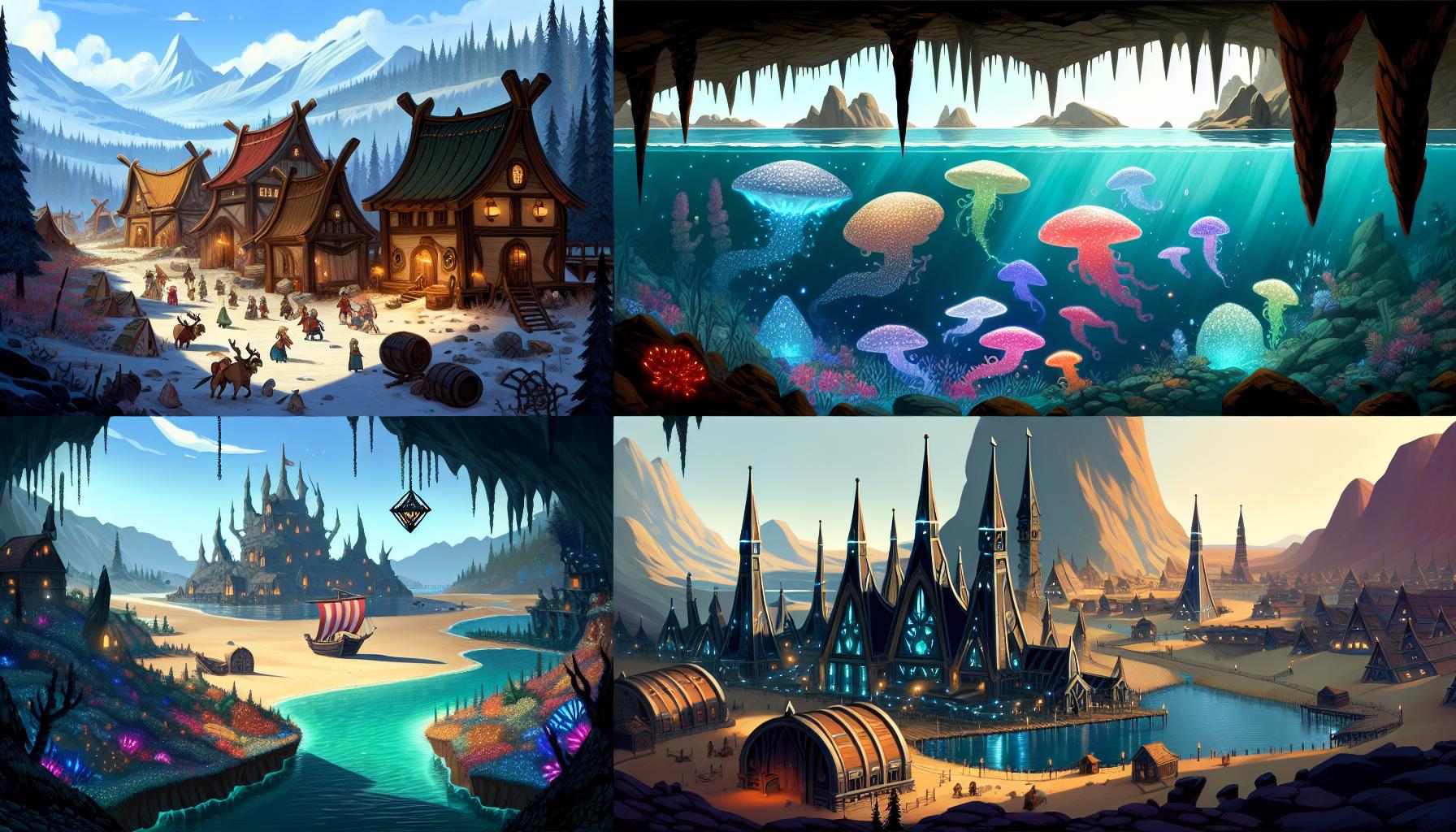
Independent developers continue to redefine open-world gaming with innovative titles that blend unique mechanics with vast explorable environments. These standout games showcase the creativity of small development teams while delivering engaging gameplay experiences.
Survival and Crafting Gems
- Valheim combines Norse mythology with robust building mechanics featuring structural integrity physics enabling players to construct intricate Viking settlements
- Subnautica presents an underwater survival experience with base-building elements set in an alien ocean containing distinct biomes filled with unique creatures
- Core Keeper integrates mining exploration with farming mechanics allowing players to discover underground civilizations while maintaining sustainable food sources
- Raft delivers oceanic survival through innovative floating base mechanics where players collect resources from floating debris expanding their mobile home
- V Rising merges vampire mythology with base-building systems featuring day-night cycles that affect gameplay mechanics resource gathering
- Outer Wilds features a time-loop mystery across multiple planets containing handcrafted environmental puzzles telling an interconnected narrative
- The Pathless incorporates fluid movement mechanics with archery-based traversal across mystical landscapes filled with ancient secrets
- Sable delivers a coming-of-age tale through desert exploration featuring distinct cel-shaded art style mask collecting quests
- Eastward combines pixel art storytelling with action-adventure elements across post-apocalyptic towns containing unique characters detailed environments
- Pine presents an evolutionary ecosystem where different species compete for resources adapting to player actions throughout the game world
| Game | Key Feature | Average Playtime |
|---|---|---|
| Valheim | Viking Building | 75 hours |
| Subnautica | Ocean Exploration | 45 hours |
| Outer Wilds | Time Loop Mystery | 25 hours |
| Sable | Open Desert | 20 hours |
| Core Keeper | Underground World | 40 hours |
Technical Achievements on Limited Budgets
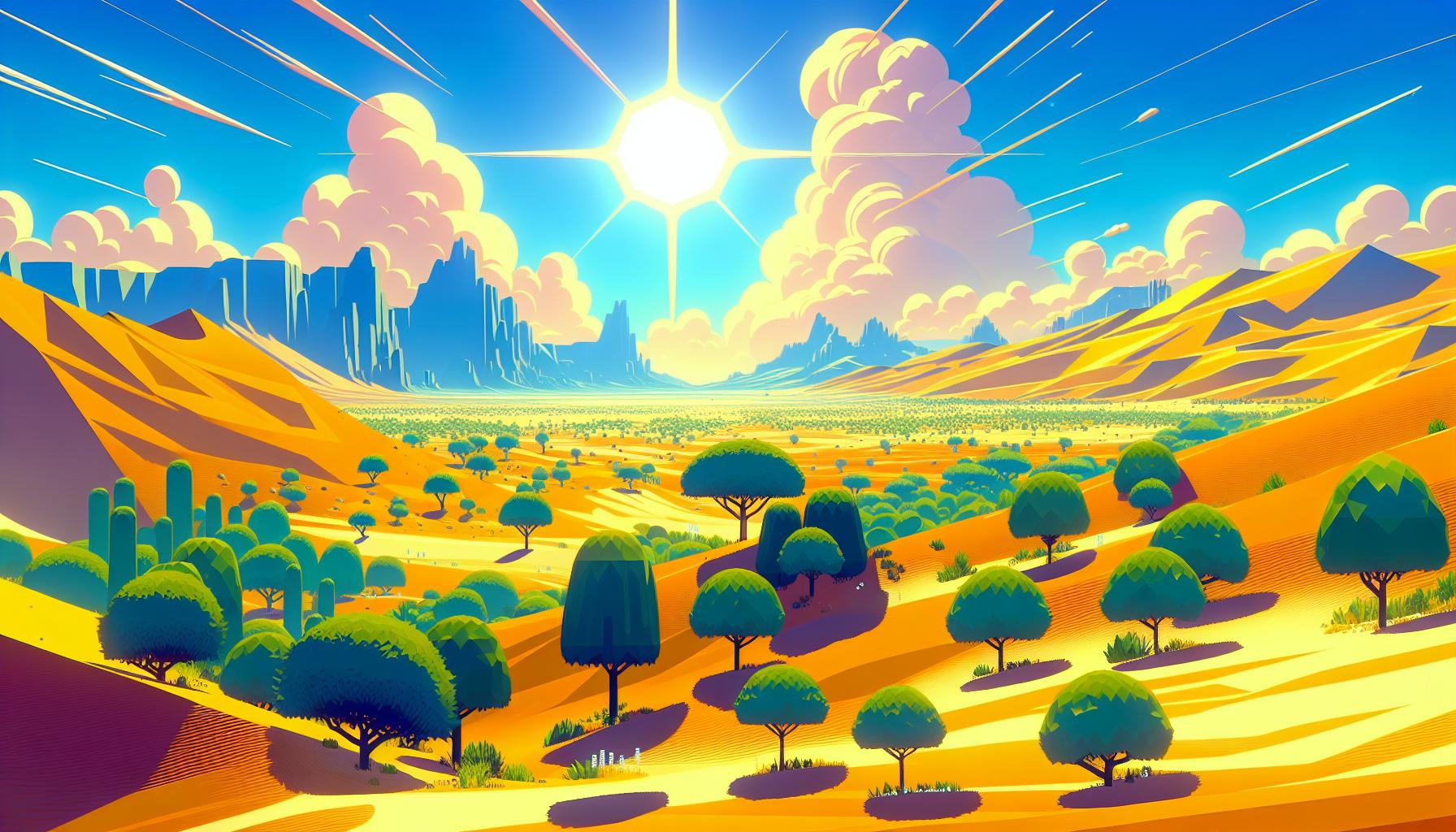
Indie developers leverage innovative technical solutions to create expansive open worlds despite resource constraints. These achievements demonstrate how small teams maximize their limited budgets through strategic development choices.
Creative Art Direction
Indie studios embrace distinctive art styles to overcome technical limitations while creating memorable environments. Games like Sable use cel-shaded visuals inspired by French comics to create vast desert landscapes with minimal processing power. Stylized low-poly graphics in Valheim enable seamless rendering of extensive Norse-inspired worlds while maintaining consistent performance on modest hardware.
Procedural Generation
Procedural generation techniques empower indie developers to create vast explorable spaces efficiently. No Man’s Sky generates 18 quintillion planets using mathematical algorithms that combine pre-made assets in unique ways. Core Keeper produces randomized underground caverns each playthrough while maintaining balanced resource distribution across its procedurally generated maps.
- Efficient asset reuse through modular design systems
- Dynamic level-of-detail scaling for performance optimization
- Smart texture atlasing to reduce memory usage
- Instanced rendering for large-scale environmental elements
- Deterministic world generation for consistent multiplayer experiences
| Game | World Size | Generated Elements | Memory Usage |
|---|---|---|---|
| No Man’s Sky | 18 quintillion planets | Terrain, flora, fauna | 6-8 GB |
| Valheim | 20,000 x 20,000 meters | Biomes, resources | 4-6 GB |
| Core Keeper | 1,000 x 1,000 tiles | Cave systems, dungeons | 2-4 GB |
The Future of Indie Open World Development
Indie open world games continue to evolve through emerging technologies that enhance world-building capabilities. Cloud computing enables smaller studios to create larger persistent worlds, while artificial intelligence generates dynamic content that adapts to player behavior. These advancements produce more responsive environments, as seen in upcoming titles like Project Flock with its AI-driven ecosystem.
Cross-platform development tools democratize game creation, allowing indie developers to reach broader audiences. New frameworks like Unity DOTS (Data-Oriented Technology Stack) enable efficient handling of large-scale worlds on multiple devices. Games such as Hytale demonstrate this by offering seamless multiplayer experiences across different platforms.
Advanced procedural generation techniques create more nuanced environments:
- Contextual generation adapts terrain based on surrounding elements
- Smart object placement considers ecological factors for realistic distribution
- Dynamic weather systems affect gameplay mechanics in real-time
- Intelligent NPC behaviors respond to environmental changes
Emerging monetization models support sustainable development:
- Early access programs provide development funding
- Community marketplaces enable player-created content sales
- Optional cosmetic items maintain game balance
- Season pass systems deliver regular content updates
Technical innovations reshape world design:
| Innovation | Impact | Example Implementation |
|---|---|---|
| Ray Tracing | Enhanced lighting in stylized worlds | The First Descendant |
| DLSS | Performance boost for larger environments | Core Keeper |
| Volumetric Fog | Atmospheric depth in smaller file sizes | V Rising |
| Physics-Based Animation | More realistic character movement | Biomutant |
These advancements empower indie developers to create increasingly sophisticated open worlds while maintaining their distinctive creative approaches. The combination of new tools, improved accessibility, and innovative funding models positions indie studios to further push the boundaries of open world game design.
Alternatives
I’ve seen indie open world games transform from modest projects into groundbreaking experiences that rival AAA titles. The creativity and innovation shown by small development teams continue to push boundaries and redefine what’s possible in the genre.
From Valheim’s Norse-inspired landscapes to Outer Wilds’ time-bending mysteries these games prove that compelling open worlds don’t require massive budgets. Through clever use of technology creative art styles and innovative mechanics indie developers have carved their own path in the gaming industry.
The future looks incredibly bright for indie open world games as new technologies and development tools become more accessible. These games aren’t just alternatives to AAA titles – they’re leading the charge in innovation and player-focused design.

